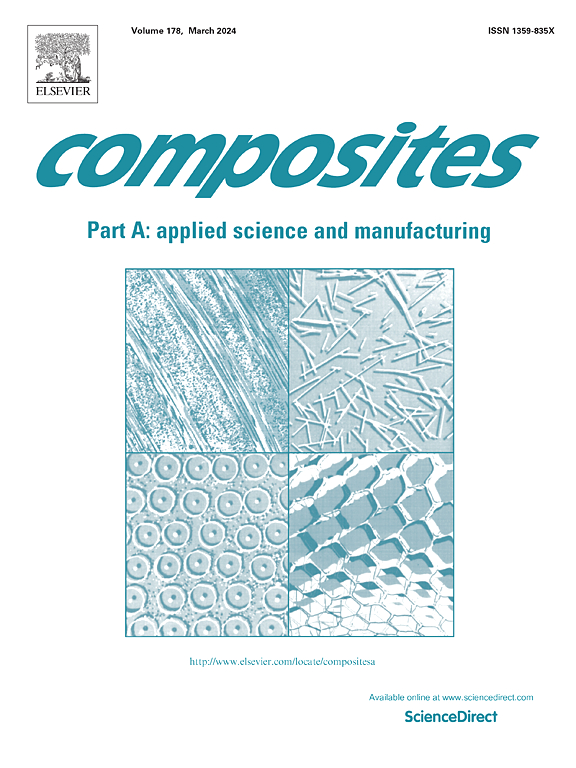Integration of polysiloxane-modified halloysite nanoclay nanocomposite coatings on fiber-reinforced polymeric composites structures: Part II—Icing/deicing, self-cleaning, sandpaper abrasion, and water immersion performances
IF 8.1
2区 材料科学
Q1 ENGINEERING, MANUFACTURING
Composites Part A: Applied Science and Manufacturing
Pub Date : 2025-03-22
DOI:10.1016/j.compositesa.2025.108879
引用次数: 0
Abstract
Cold weather conditions such as frost, snow, and freezing rain can limit the performance of fiber-reinforced composites, commonly used in aviation, defense, automotive, and other industries, potentially causing damage. Ice accumulation on surfaces can disrupt systems and damage components. Superhydrophobic (SH) surfaces offer a solution to prevent ice formation. This study explores the development of SH nanocomposite coatings based on polysiloxane-modified halloysite nanoclay (HNC) for glass, carbon, and Kevlar composites. The coatings’ effectiveness in preventing and removing ice was evaluated through various tests, including ice adhesion and air-blowing tests. The results showed that the SH coatings enhanced ice dissipation, particularly for carbon fiber composites. Despite slight changes in water contact angle after repeated tests, the coatings retained SH properties. Self-cleaning and wear tests demonstrated that the coatings successfully repelled dust and pollutants, while maintaining mechanical durability. This work offers a promising approach to improve ice-prevention performance in critical industrial applications.
求助全文
约1分钟内获得全文
求助全文
来源期刊

Composites Part A: Applied Science and Manufacturing
工程技术-材料科学:复合
CiteScore
15.20
自引率
5.70%
发文量
492
审稿时长
30 days
期刊介绍:
Composites Part A: Applied Science and Manufacturing is a comprehensive journal that publishes original research papers, review articles, case studies, short communications, and letters covering various aspects of composite materials science and technology. This includes fibrous and particulate reinforcements in polymeric, metallic, and ceramic matrices, as well as 'natural' composites like wood and biological materials. The journal addresses topics such as properties, design, and manufacture of reinforcing fibers and particles, novel architectures and concepts, multifunctional composites, advancements in fabrication and processing, manufacturing science, process modeling, experimental mechanics, microstructural characterization, interfaces, prediction and measurement of mechanical, physical, and chemical behavior, and performance in service. Additionally, articles on economic and commercial aspects, design, and case studies are welcomed. All submissions undergo rigorous peer review to ensure they contribute significantly and innovatively, maintaining high standards for content and presentation. The editorial team aims to expedite the review process for prompt publication.
 求助内容:
求助内容: 应助结果提醒方式:
应助结果提醒方式:


